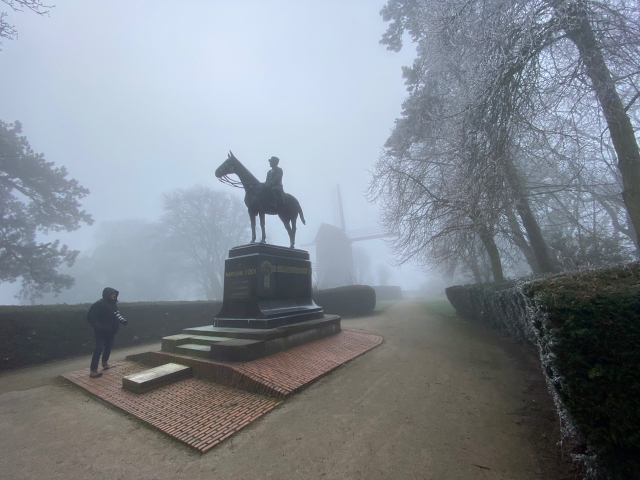
The lovely town of Cassel, near Lille in Northern France, is shrouded in mist – the same mist that had accompanied our first ever visit to the World War One cemeteries of Vimy and Notre Dame de Lorette.
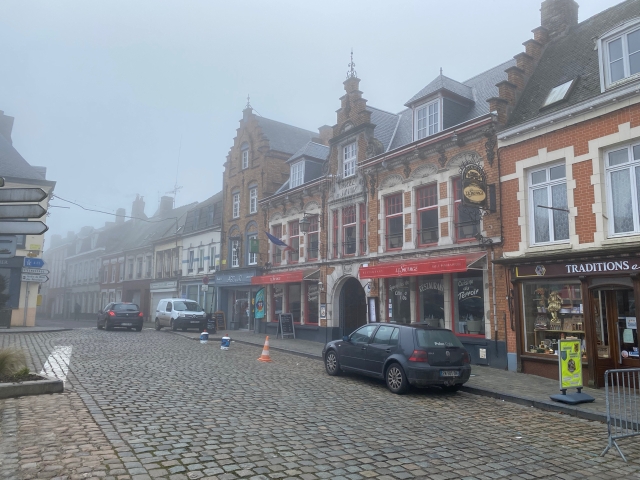
Six of us are slotted, snugly, into the mid-size people carrier bouncing at speed into the centre of Cassel. Behind us are a variety of warm coats that are going to keep us alive when we get out of the car. It’s freezing out there… and misty. It’s a biting cold that has followed us throughout our trip.
It’s all very French…
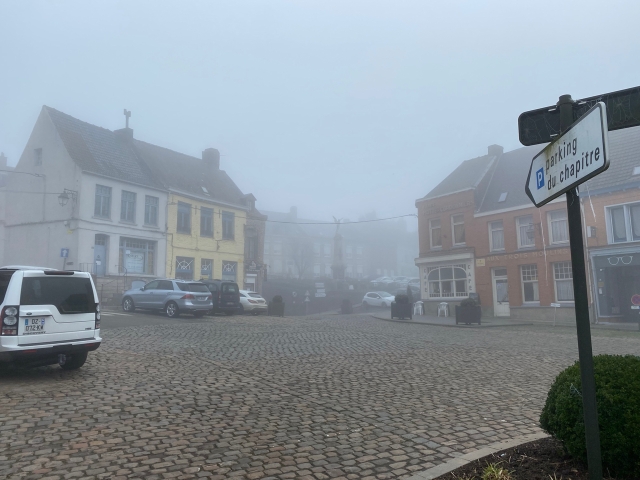
Christophe beats another driver to the one remaining free spot in the market square of Cassel and steps out, smiling at the cold. He slides on his thin coat. He’s our resident ‘action man’; a runner, swimmer and cyclist. The day before, he insisted on taking us to a long beach in northern Calais so that we could walk one of the family’s dogs… and he could swim in the sea… In mid-mid January, for heaven’s sake…
That brief cameo is amusing but doesn’t do him justice. He’s very intelligent and full of warmth. He’s a man of immense hospitality. Three years ago I didn’t know he existed. My wife, Bernie, discovered his family through the online Ancestry website. We had known the French side of the family existed, as my great uncle Stephen stayed in France after surviving the WW1… including the Battle of the Somme, whose site is only a few miles away. Christophe is his grandson.
Stephen married a French girl – the daughter of a baker in St Omer. They trained him up as (in their own words) ‘a kind of baker from Bolton‘, and he and his new wife prospered and had four children. We’ve visited Stephen and Adrienne’s grave. It was quite a moment.
Christophe is their grandson… and my second cousin. For over eighty years the two branches of the family were lost to each other. I’m hoping to write a book on the story and the amazing stroke of luck that led to the discovery of their existence.
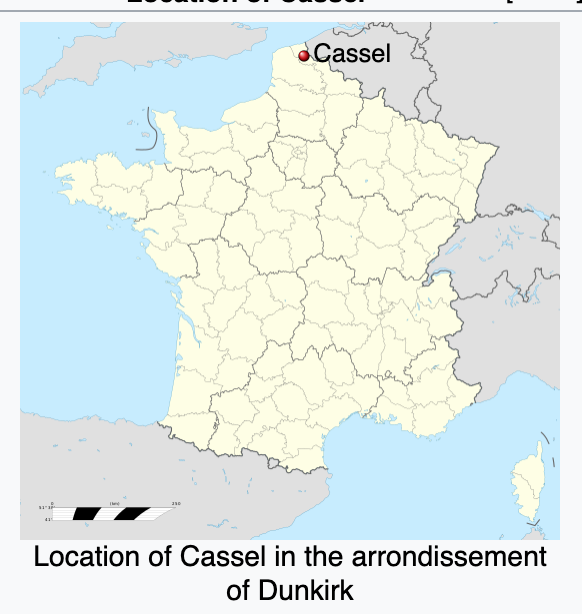
Christophe and his mother, Mado, have brought us to Cassel as part of a day’s touring to show us some of their favourite towns in this part of France. The department of Nord lies in the far north of France, It was formed from the western halves of the historical areas of Flanders and Hainault, and the Bishopric of Cambrai. The nearest city is Lille -where the other branch of our long-lost family lives. The French Flemish dialect of Dutch is still spoken here, side by side with modern French.
The first thing to say about Cassel is that it’s a town on a hill – Mont Cassel. This is a flat part of France. At 176 metres above sea level, Mont Cassel towers over the surrounding countryside. Its peak offers a vantage point from which you can see all of the surrounding landscape… If the prevailing weather is not freezing fog as it was during our visit.
The main rock of the hill is limestone, capped with a harder outer layer of iron-bearing rock. This geological layering has made it an ideal base for military and social fortifications throughout its long history.
The hill was occupied during the late Iron Age by the Menapii, a dominant Belgic tribe who made their hill fort the capital of a vast territory extending from Calais to the Rhine. The Menapii fought against Julius Caesar, but the Roman governor of Gaul, Carrinas, subsequently quelled their rebellion, and the Menapii culture and territory were absorbed into the Roman Empire. The modern town takes its name from the Roman settlement, not the later middle ages fortification shown in the historic map, below:
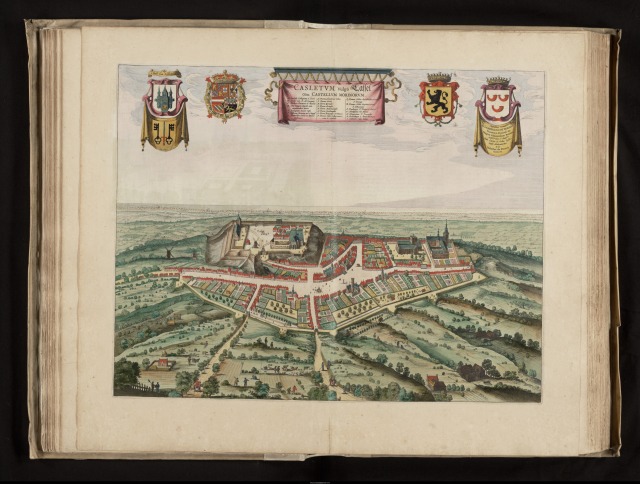
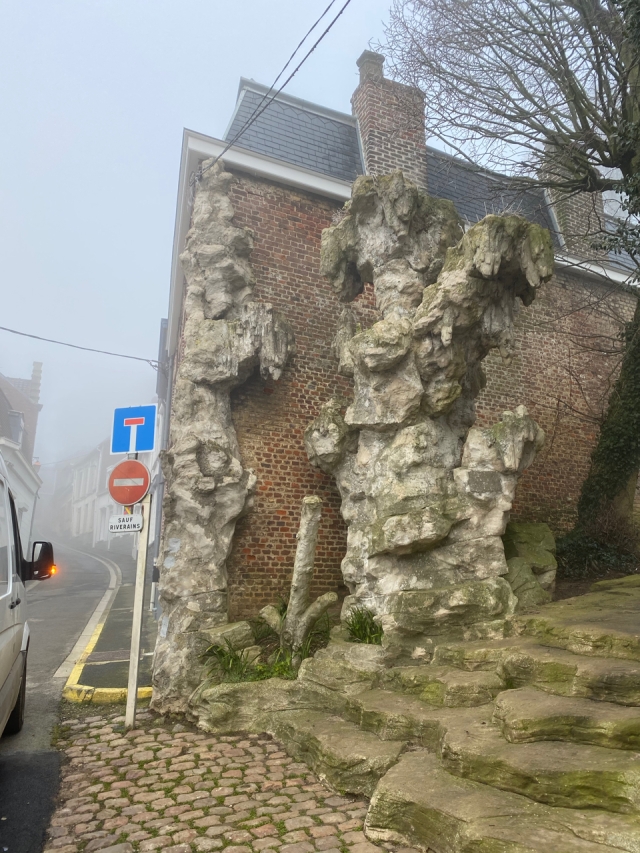
But, first, Christophe wants to show us a different face of the hill in Cassel. The summit and its fortifications have long been re-purposed, and Christophe points us up a steep, cobbled path with some very strange concrete ornaments.
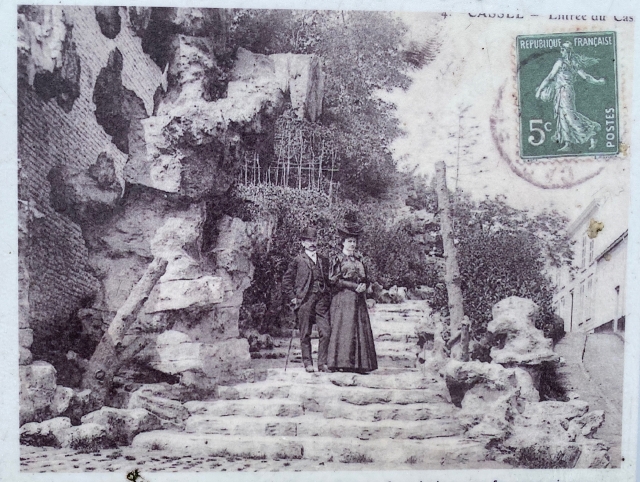
From the information board:
“The Alpin Stairs are a vestige of ‘rock-work’ architecture, typical of the end of the 19th century, like those at Buttes Chaqumont in Paris.
These pseudo-rustic architectural compositions imitate mineral or vegetable elements like stone or wood.’
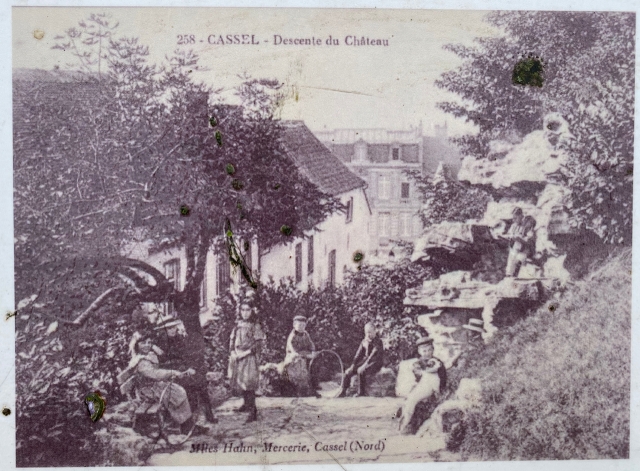
I stare at the concrete forms. They are old and dirty; and it’s necessary to see beyond that facade to get to the spirit of their origin. The visitor board goes on to say that they were designed for two purposes: ‘to reflect nature and to remind visitors of the ‘atmosphere of the mountains’. In that latter sentiment, I can suddenly see what they meant… and with that comes a memory of another artist and architect of the time of the Art Nouveau movement – Charles Rennie Mackintosh.
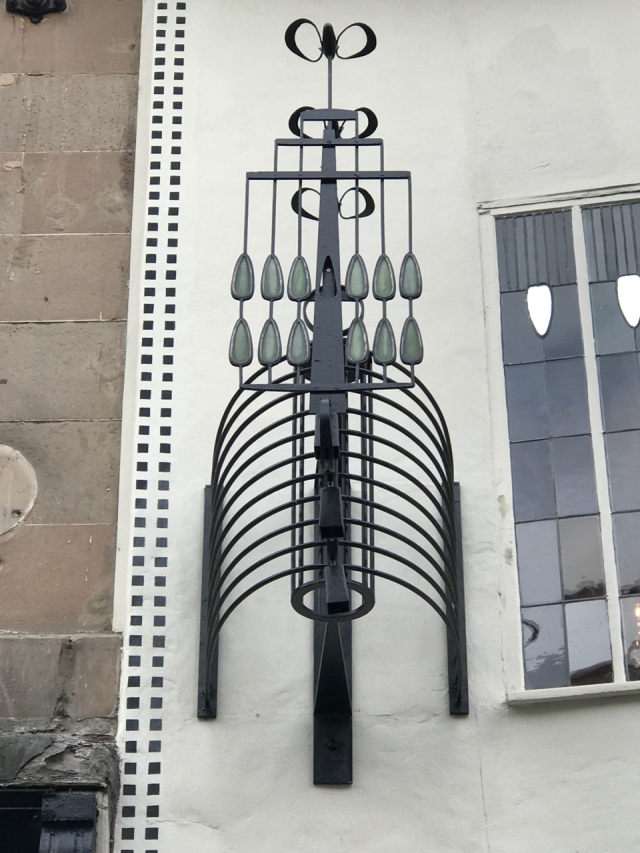
At the top of the Alpin Stairs we come into the Jardin des Mont du Recollets (Garden of Remembrance). Normally, it provides expansive views over the plains of Flanders and, on a very clear day, the North Sea, but not today…
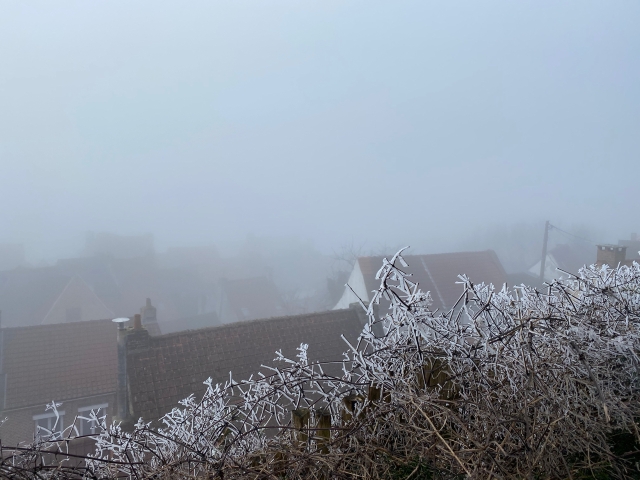
Historically, it was said that from Mont Cassel you could see five kingdoms: France, Belgium, Holland, England … and Heaven. We smile, ruefully and turn to examine the beautiful gardens.
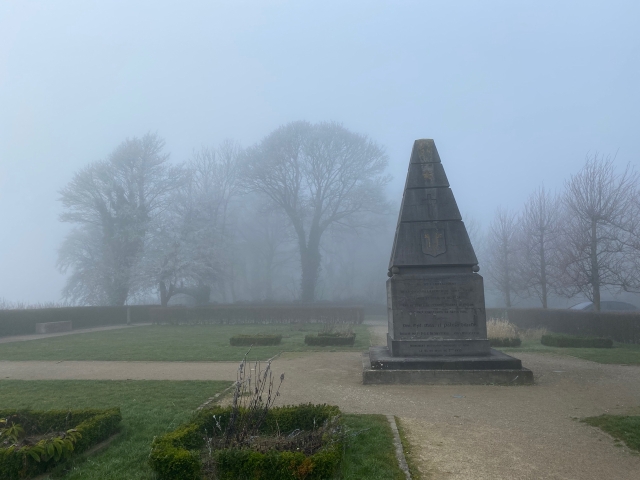
Beyond the geometric beds, the pathway winds round a beautiful set of willow trees, frosted with the freezing fog. At this point the fog begins to add great beauty to the place..
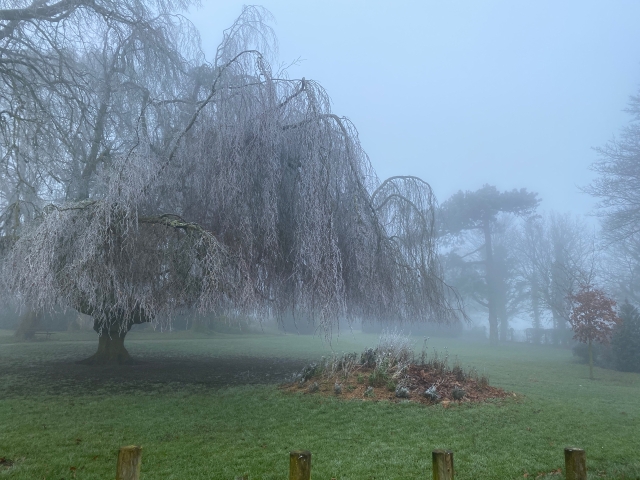
The Kasteel Meulen is a real ‘Castle Windmill’ situated on the highest point of Mont Cassel on the site of the former castle. The original windmill, constructed here in the 16th century, burned down in 1911. It was replaced in 1947 by an 18th century windmill that was moved from nearby Arneke. The mill works and is still open to the public during the summer.
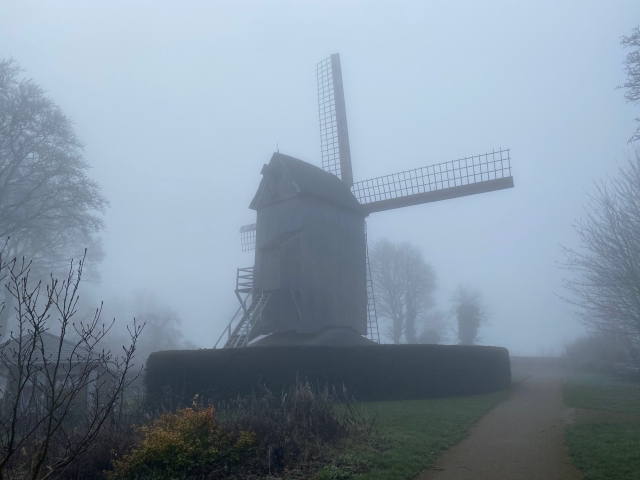
The garden also hosts an equestrian statue of Marshal Foch and the Monument of the three battles. Marshal Foch was the Supreme Allied Commander during WW1 and Cassel served as his headquarters between October 1914 and May 1915.
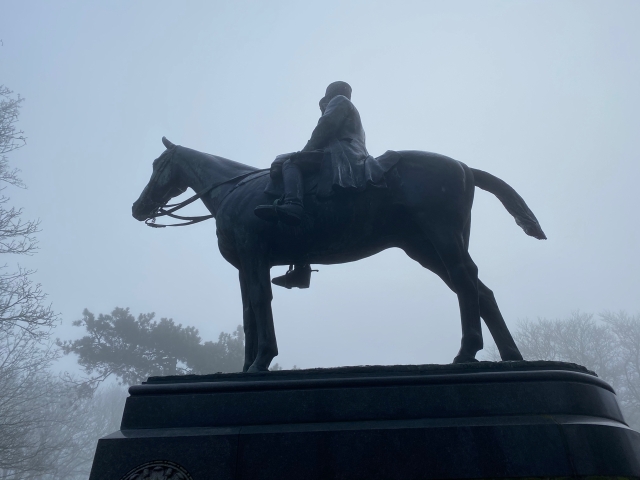
He moved his headquarters to Cassel to take advantage of its strategic position near the northern end of the Western Front.
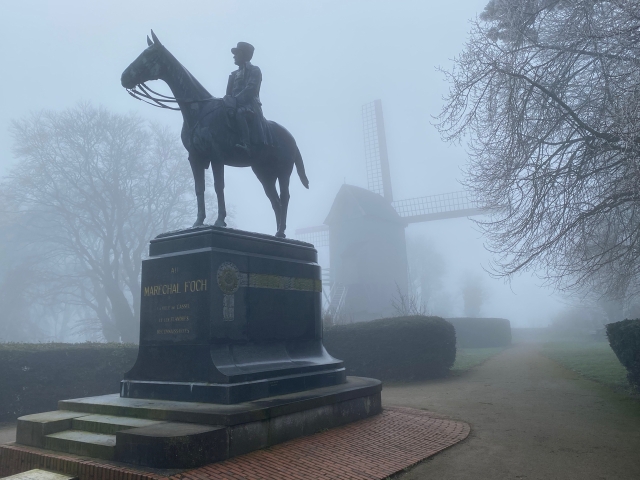
From 1916-1918, Cassel was the headquarters the British Army under Sir Hubert Plumer. The town avoided major damage during the war, though it came under occasional shelling when the Germans advanced to within 18 kilometres during the Battle of Lys in April 1918, shortly before the end of the war.
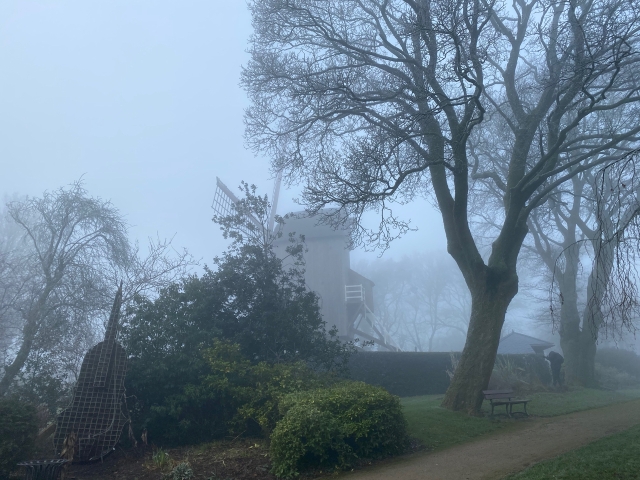
We leave the Remembrance Gardens quietly. They are a place of great beauty and contemplation. We may never be back and it feels good to have spent time here…
©Stephen Tanham
Stephen Tanham is a Director of the Silent Eye School of Consciousness, a not-for-profit teaching school of modern mysticism that helps people find a personal path to a deeper place within their internal and external lives.
The Silent Eye provides home-based, practical courses which are low-cost and personally supervised. The course materials and corresponding supervision are provided month by month without further commitment.
Steve’s personal blog, Sun in Gemini, is at stevetanham.wordpress.com.

Lovely post, Steve. Gentle, informative, poignant, affectionate. Great photographs too.
That’s very kind, thank you! That’s such good feedback, too! 😎
While the freezing fog adds mystery and silence to this place, I imagine you must have been frozen to the bone. Sobering to think of all those men in the trenches in winter. Godawful!
Yes, Eliza. We’d been there for about half an hour when Bernie made the same observation… sobering.
A lovely post, Steve. Your pictures are beautiful and quite mysterious too.
Thank you, Robbie. It was the mist wot dun it…